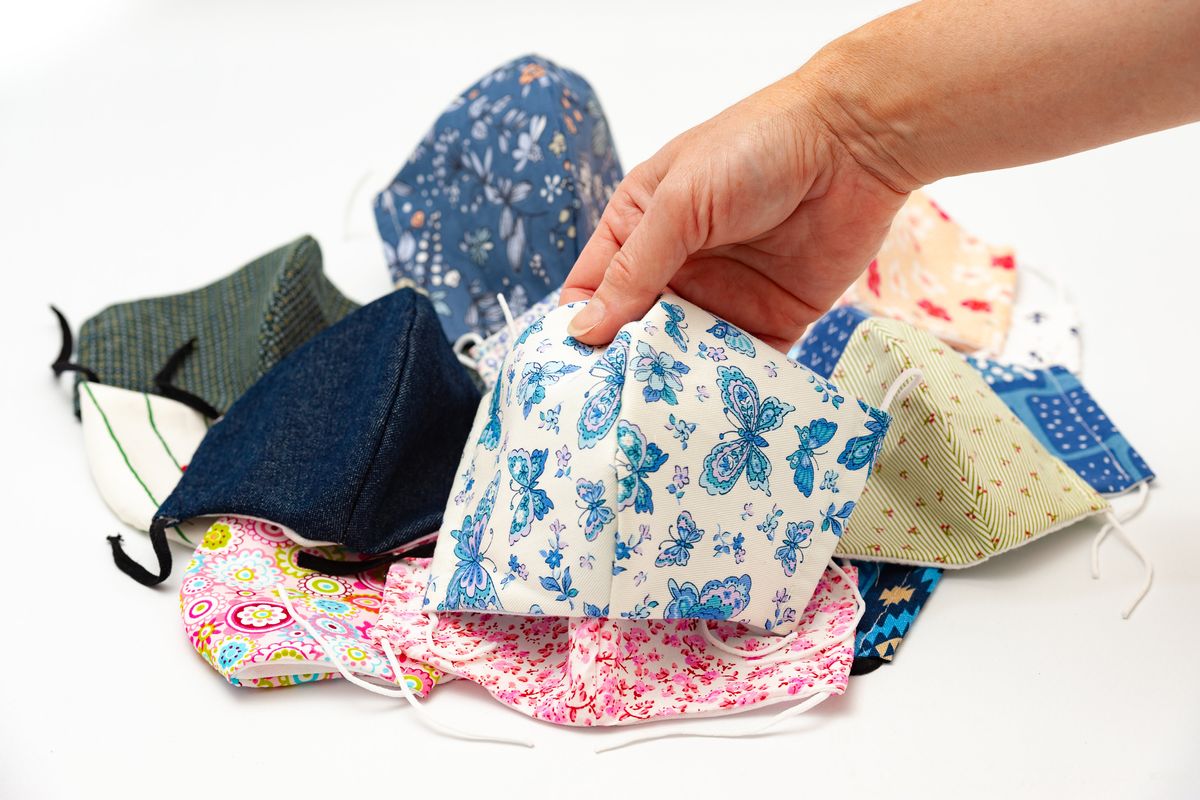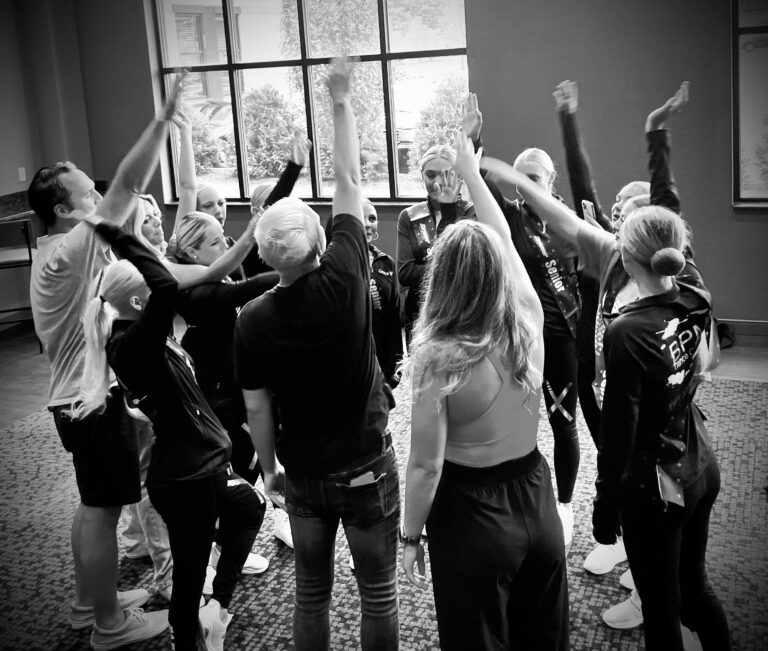
From oversized mouse heads in The Nutcracker to Jabbawockeez masks, most dancers have experience performing with restrictive costumes or headpieces. But as we transition from taking class at home during the COVID-19 pandemic to sharing a studio with others, masks aren’t just a costume accessory: They’re a necessary health tool.
While masks are not a replacement for other COVID-19 prevention measures that we’ve been following for months, such as social distancing and practicing hand hygiene, the Centers for Disease Control and Prevention recommends that people wear face masks or cloth face coverings in any public setting or instance where it’s difficult to maintain at least six feet of social distance—and that includes the dance studio.
We spoke with medical experts and dancewear manufacturers about what to look for in a protective mask for dance.
Why masks are a must
COVID-19 is mainly spread through respiratory droplets and aerosols that are produced when an infected person talks, coughs or sneezes. Covering your nose and mouth is one of the easiest things you can do to prevent the spread of COVID-19, and keep your fellow dancers safe, says Dr. Nita Bharti, an infectious disease expert from the Center for Infectious Disease Dynamics at Penn State University.
The point of wearing a mask is to protect other people from your own respiratory droplets, says Dr. Charlotte Baker, assistant professor of epidemiology at Virginia Tech. Everyone in the studio must wear a mask, because people can carry and spread COVID-19 without having any symptoms. “The more people wear a mask, the safer everybody gets to be,” she says.
Masks are particularly important when you’re indoors, because there’s less airflow for respiratory droplets to disperse. If you’re in an enclosed indoor dance studio, for example, your droplets will essentially be confined to that room, Bharti says. Not to mention, you tend to breathe heavier during physical exercise, which means that you’re spreading even more droplets, Baker says.
Keeping your nose and mouth covered throughout a day of rehearsals and classes comes with its challenges, but it’s worth it for your long-term health. “Even if you’re young and healthy, this virus can do horrible things, with lasting effects that could really have a negative outcome on your dance career,” Bharti says.
Find the right fabric
Ideally, your mask should be breathable so you can still exert yourself, but thick enough to stop your respiratory droplets. Baker recommends a simple fabric test: Put your mask on, hold your hand six to 10 inches from your face, and take a deep breath. If you can feel the air on your hand as you exhale, your mask isn’t thick enough, she says.
Since your mask will be close to your face for prolonged periods of time, opt for natural fabrics, such as bamboo and cotton, over man-made ones like polyester, says Luis Guimarães, CEO and co-founder of dancewear company Ballet Rosa. The Ballet Rosa masks are made from a blend of bamboo and stretchy cotton, which are natural fabrics that work well at filtering particles while also allowing breathability.
Focus on fit
From a practical perspective, your mask needs to cover your nose, mouth and chin, with no gaps where respiratory droplets could easily escape, Baker says. “The biggest thing is you just want to make sure it fits your face,” she says.
Of course, buns and other dance hairstyles can make mask straps awkward. Ballet Rosa offers four masks that have slightly different straps to accommodate different hair needs: one with an adjustable single strap; one with double elastics; one that loops around the ears; and one with an adjustable over-ear drawstring. The idea is that you can choose how to position the mask around your bun and keep it secure throughout your day.
These details matter, because once you have your mask on, you shouldn’t fidget with it or remove it. Touching the outside of the mask can cause contamination.
Wash it well
Many fabric face masks that are intended for exercise are treated with antimicrobial agents to ward off germs from your sweat. Bloch’s B-Safe face mask, for example, is made from a cotton-polyester blend that’s designed to control odor and keep the fabric fresh as you dance, explains Cathy Radovan, COO of Bloch. The Under Armour Sportsmask, another popular pick for athletes, has an inner fabric liner that wicks away sweat and keeps bacteria from growing on the mask.
Even with these special features, it’s important to wash your mask after every use, or when it becomes visibly soiled. The CDC suggests machine-washing your mask with regular laundry detergent and warm water, and drying it on the highest heat setting.
Keep your mask in a plastic or paper bag when you’re not using it to prevent further contamination. If you dance most days, you may want to have more than one mask so you can always have a clean mask at the ready.
Do a “dress rehearsal”
Exercising in a mask takes practice, just like everything else in dance, Baker says. It’s completely safe to cover your nose and mouth with fabric while dancing or exercising, but a little discomfort is to be expected, she says.
Research suggests that masks and face coverings may increase “breathing effort” during exercise, but not to a degree that it would affect your performance, explains Dr. William O. Roberts, a family medicine and primary care sports medicine physician and professor at the University of Minnesota, who’s a past president of the American Council of Sports Medicine. “You’re not going to have any problems with oxygenation, increased CO2 retention or anything like that,” he says.
If you’re having difficulty breathing, or if you feel short of breath while dancing, that’s a sign that you need a different mask, Baker says. You might want to explore either a more breathable fabric that is still effective or an alternative fit that allows you to get more oxygen, she says. (Keep in mind that wearing a mask or face covering can be dangerous for people who have medical conditions that affect breathing, such as asthma, she says. Talk to your doctor if you’re not sure what the best option is for you.)




